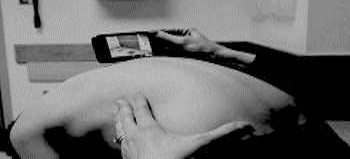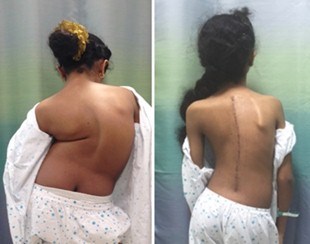Dear Guest,
We would be delighted to receive your feedback on our services.
Captcha * (case sensitive)
Scoliosis in children is a condition that causes the spine to curve to the side. It commonly affects the chest area (thoracic scoliosis) or the lower back area (lumbar scoliosis) or both. This condition is more common in girls.
The easiest way to diagnose scoliosis in children is using the Adam’s forward bending test. With the child in forward bending position (picture), notice the asymmetry in the back. Most smart phones have inclinometers which can actually measure the amount of asymmetry. If the asymmetry is more than 7º, a referral to spine physician is recommended.
In most cases, the reasons for the change in curvature are not known (idiopathic scoliosis), but in other cases conditions such as cerebral palsy, spina-bifida, neurofibromatosis and some spinal birth defects (congenital scoliosis) lead to the development of scoliosis.

Some children may require surgery for scoliosis if the curve in the spine is progressive. Neglected curves can lead to chronic pain and unsightly deformity.
chronic pain and unsightly deformity. More dangerously very large curves can lead to crowding of the lungs and the heart in the chest that can lead to serious life-threatening cardiorespiratory deficiency. Hence, an early referral to a spine physician who specialized in scoliosis treatment is essential.

An example of a severe scoliosis in a 10-year-old child with severe idiopathic scoliosis that was operated at Sir H. N. Reliance Foundation Hospital (RFH) is shown in the picture. With modern state-of-art technology and multidisciplinary team approach, this surgery can be safely performed in children.



RELIANCE FOUNDATION HOSPITAL Free Mobile App From

